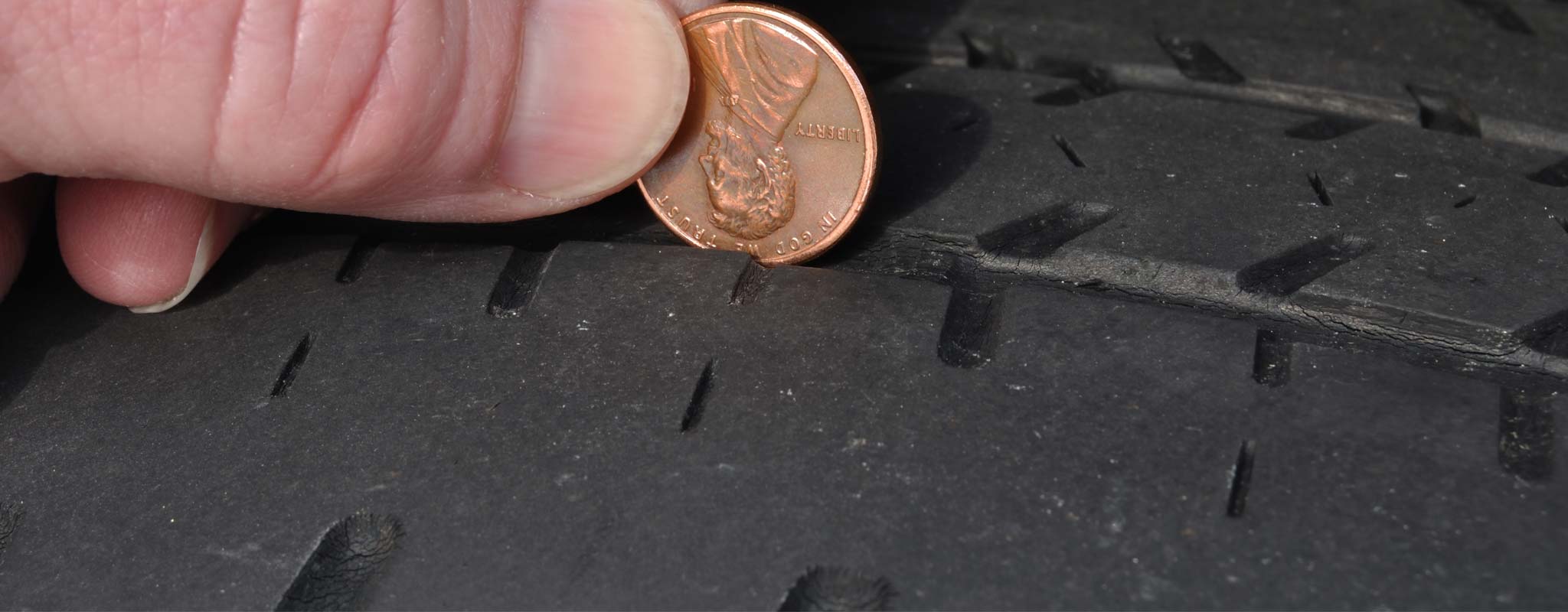Tire Tread and the Useful Penny Test
Anyone who drives a car knows what tire tread is. But do you know how to tell whether it’s wearing thin?
Worn out tires affect your car’s performance and your safety. Luckily, there’s a simple way to check your tires with just your pocket change.
Measuring Tread Depth With the Penny Test
A new car tire typically has a tread depth of 10⁄32 or 11⁄32 inches while a light truck will have between 11⁄32 and 19⁄32 inches. The U.S. Department of Transportation recommends that you replace your tires once they’ve worn down to 2⁄32 inches. Many states require tires to be replaced when the tread reaches that depth.
How do you know when your tires are officially worn out? You can use a tread depth gauge or take your car in for a professional evaluation. But the easiest way is to do a penny test.
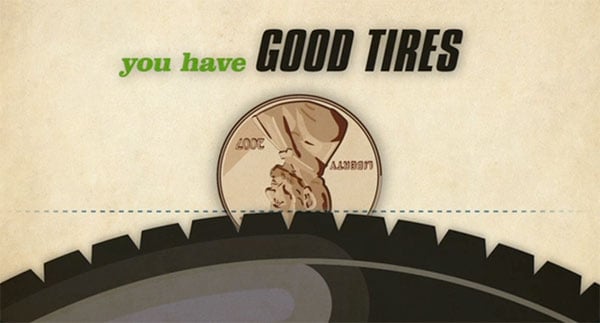
- Take a penny and place it with Lincoln’s head upside down between two ribs on your tire.
- If part of the head is covered, your tires are still in good shape.
- If you can see his entire head, your tread is worn to 2⁄32 inch or less and it’s time for new tires.
- Check various points on the tire — around the circumference and between different ribs — to look for uneven tire wear.
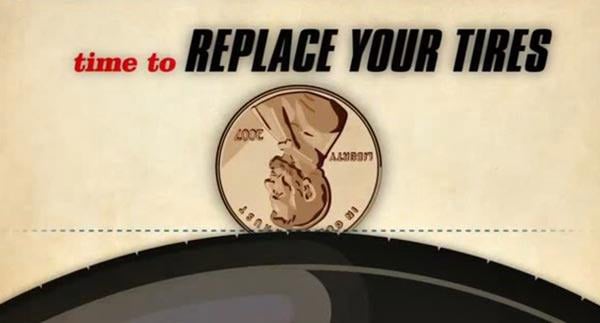
Many car and truck tires come with indicator bars at 2⁄32 inch. If these are even with your tread ribs, you’ll know your tires need to be replaced.
Now you can measure your tread, but you may not know about all its components or what different tread patterns are for. The more you know about types of tread, the easier it will be for you to choose the best tires for your vehicle. Here are some facts to beef up your tire knowledge.
What Is Tire Tread?
There are four (sometimes five) main components to tire tread:
- Ribs: The long, raised bands that go all the way around a tire.
- Blocks or lugs: The raised segments between ribs.
- Grooves: The space between ribs.
- Voids: The space between tread blocks.
- Sipes (sometimes): Thin slits cut across the tread blocks and ribs.

Ribs and tread blocks make contact with the pavement, while grooves and voids channel water when roads are wet and allow the blocks to flex as tires grip the road.
Siping is designed to improve tire performance during wet and winter driving conditions.
Different tire manufacturers combine these features to create signature designs and offer good performance for a range of driving conditions.
Types of Tire Tread Patterns
Though each tire manufacturer makes unique variations on tire tread, the patterns generally fall into three categories. Each pattern provides different handling and performance.
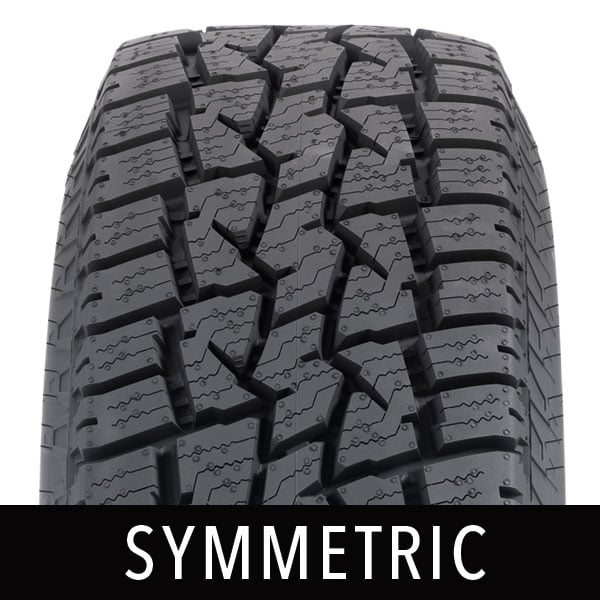
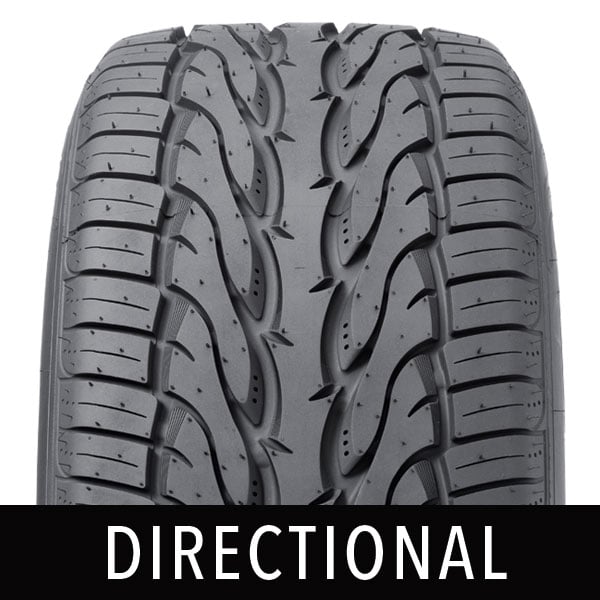
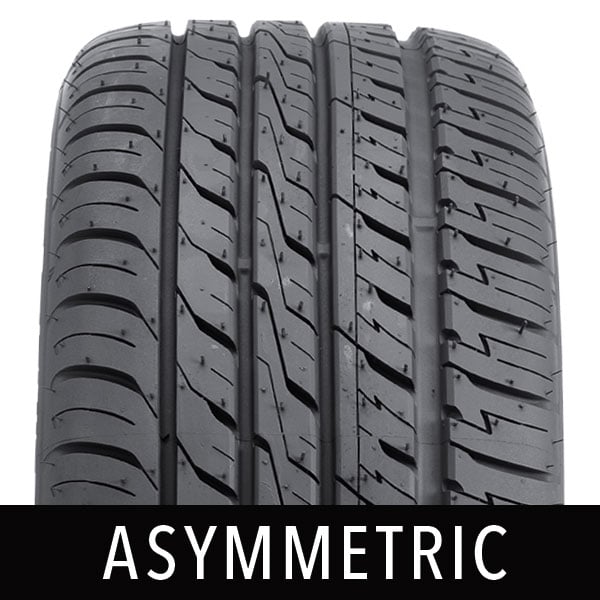
- Symmetric designs, as the name suggests, have the same pattern across the whole tire. This is the most common tread pattern for passenger cars.
- Directional tread patterns include lateral voids pointing in only one direction, making a V design, and are used on performance cars (those designed for speed). These tires channel water in one direction for reliable handling in wet conditions and provide zippy handling on dry roads.
- Asymmetric designs combine the above two patterns to offer good grip on dry roads as well as traction in wet and winter conditions. The inner side of the tire often features lateral voids like those found in directional tires, while the outer side uses larger tread blocks.
Summer tires and winter tires both generally have a symmetric design, with winter tires sporting deeper tread depth and sipes. Asymmetric patterns are often a good choice for all-season tires.
Safety Risks of Worn Tires
Though tires are considered bald at 2⁄32 inch, they lose some of their performance capabilities before that.
As tire tread wears, it becomes less able to channel water and the risk of hydroplaning increases, especially at higher speeds. If you know your tires are partly worn, be sure to give yourself extra stopping distance in wet conditions.
Grip loss on snowy or icy roads is a concern. As the rubber wears, sipes disappear and tread blocks don't provide as much grip. Again, allow yourself more stopping distance and consider replacing your tires to stay safe during winter months.
Tires with partly worn tread are more likely to get punctures and lose air pressure, too. And punctures can cause tire failure, which is a particular problem at high speeds because you can lose control of your vehicle.
Drive on Safely
A penny test will tell you when your tires are bald, but if you’re headed into winter or a rainy season, a tread depth gauge is the surest way to test. Or stop by your local tire shop to have a professional evaluate your tires.
Learn More
What you need to know
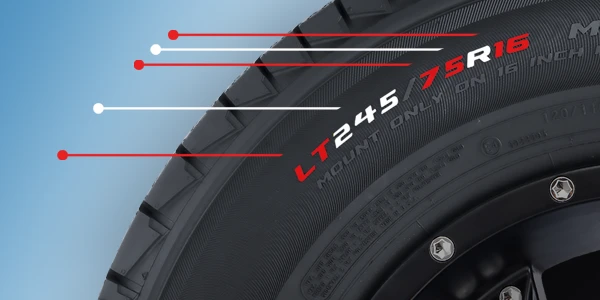
Tire Size Explained: What Do The Numbers On The Side Of A Tire Mean?
Everything you need to know about tire sizes and how to understand what the numbers on the sidewall mean. See our helpful sizing charts.
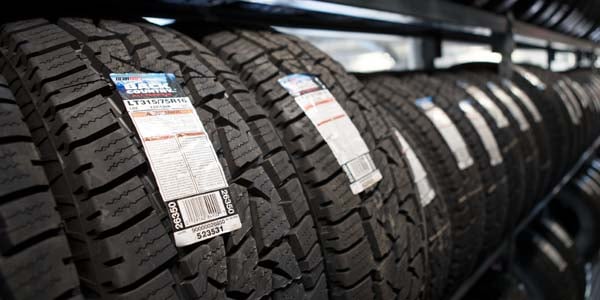
How to Tell If You Need New Tires
Wondering how often you should get new tires? Read this article to find out about tire wear bars, and how you can tell when you need to replace your tires.

How to Make Sure Your Winter Tires Have Enough Tread
Wondering what tread depth is suitable for driving in winter conditions? Read this article to find out more about 6/32 and 5/32 tread depth during the winter.

